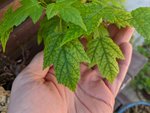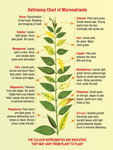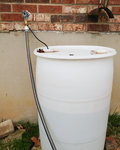Chlorosis is a condition where leaves don't produce enough chlorophyll, which is why they look pale and yellow. There are several causes, but the one I'm most familiar with is a deficiency of iron, magnesium, or zinc. Even if there is iron present in the soil, a high ph of water can over time change the ph of the soil, making the iron chemically unavailable for the tree's roots to absorb.
View attachment 285805
Based on your picture and my previous experience having the exact same thing happen to my Amur maples, I'd say it's an iron deficiency due to a high ph.
View attachment 285806
Google "_____ county water quality" for wherever you live. My county has a yearly update for my district's exact ph. Mine is 9.0ph with 131mg/l water hardness. By comparison rain water is roughly 5.0ph.
View attachment 285807
The ph of the water changes the soil ph over time. Harry Harrington explains his method of using 1 teaspoon of vinegar with 7 liters of water *once a month* to water his bonsai. Preventing the acidic water from changing the ph of the soil too quickly.
http://www.bonsai4me.com/AdvTech/ATHard Water pH and Bonsai.html
I decided on a more permanent solution. Attached to my hose is a siphon that pulls a diluted acid from a 50 gallon drum. That way all of my water comes out of the hose at roughly 6ph every time I water my trees. I measure and refill the 50 gallon drum about 3 times a year. The drum is filled with a hydroponics product called "PH Down" that's a mixture of several different kinds of acids. About 2 cups of acid per 50 gallons, then mixed with the siphon, the water comes out at 6ph
View attachment 285804
Soil ph is difficult to properly test because of our inorganic, granular particles, so I found it much easier to test and monitor my water ph. In the 3 years since I added my drum of acid water, I haven't seen any chlorosis problems again. This solution is *instead* of adding iron fertilizers to the soil.
If you only have a few acid loving trees (amur maple, larch, azalea) you can simply water those with rain water and use your tap water for everything else.






